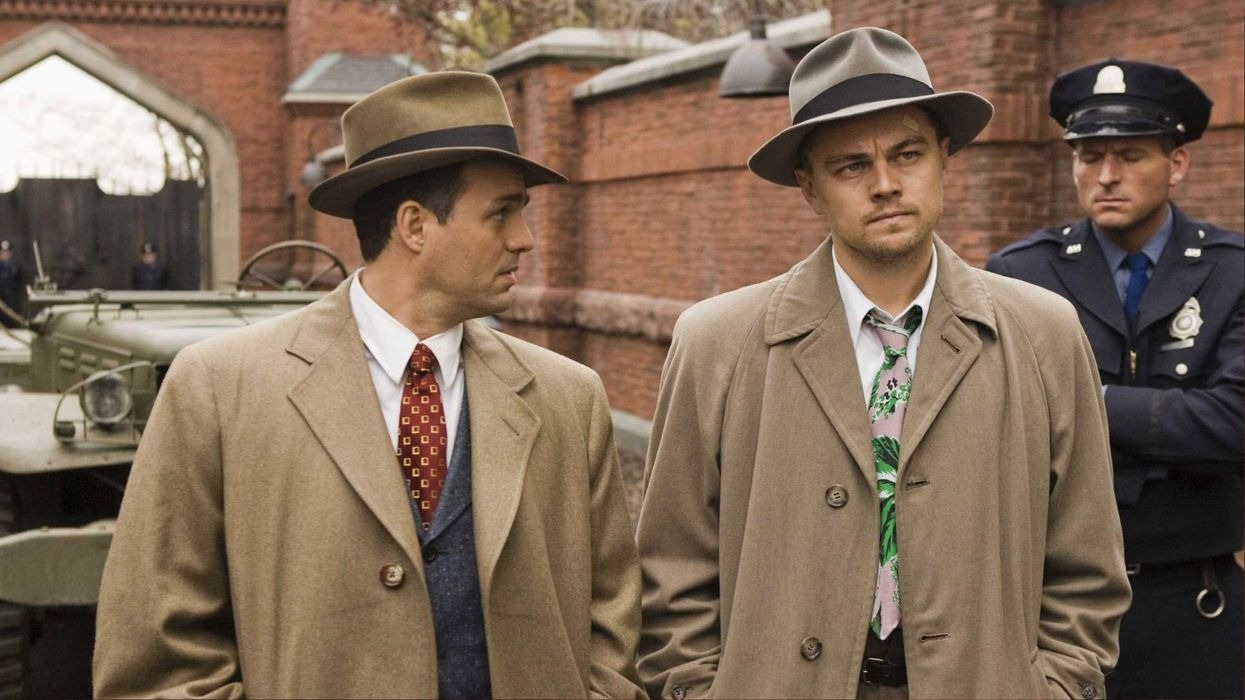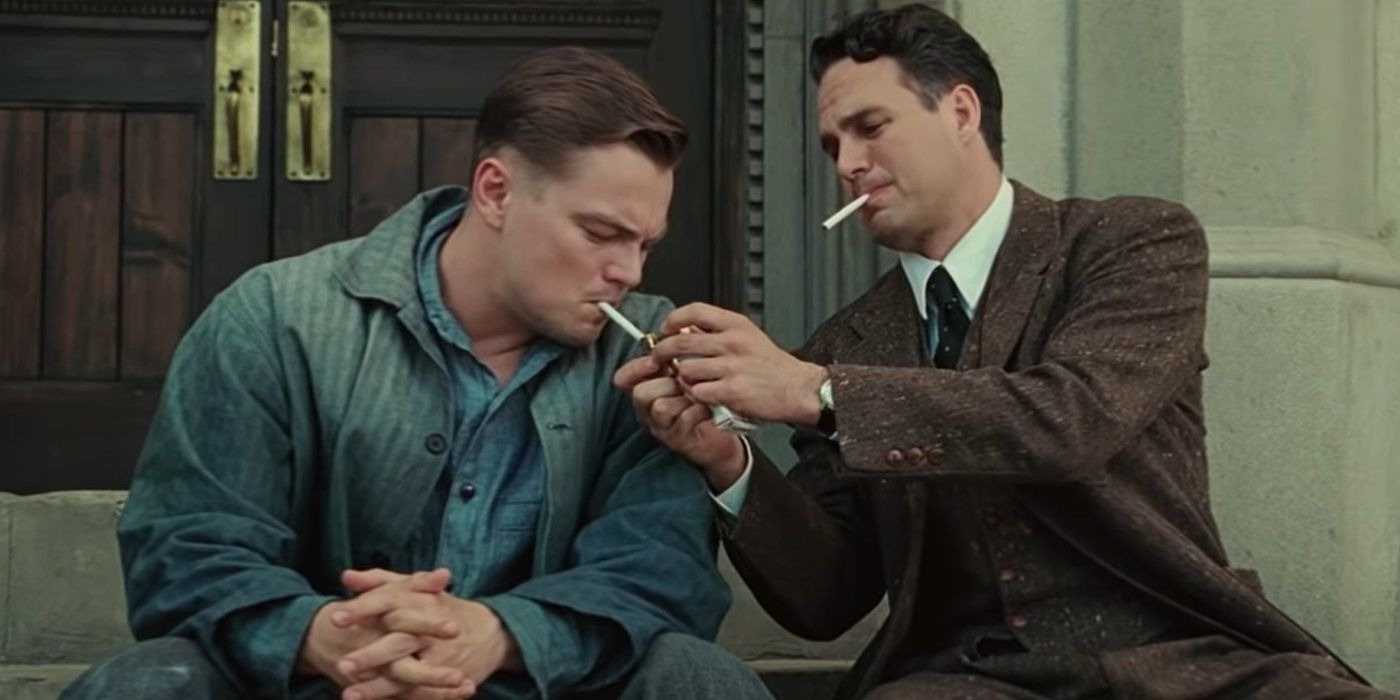Teddy Daniels discovers that he is Andrew Laeddis, though Dr. Caw can be confusing at first, but after watching again, the conclusion becomes clearer. Teddy Daniels discovers that he is Andrew Laeddis, though Dr. Cawley and Dr. Sheehan had already warned him that he had slipped into his fantasy world once before.
However, Andrew is aware of his situation and is cautious. When Dr. Sheehan sits with him the next day, Andrew understands that the doctors and the Warden are closely monitoring his behavior. Despite realizing his true identity, Andrew’s burden of guilt and pain is so overwhelming.

Instead of facing his tragic reality, he chooses to remain in his delusion as Teddy Daniels, even opting for a lobotomy as a way to escape his torment.
While some people think he simply reverts to his “Teddy” persona, his final question to Dr. Sheehan, “Which would be worse – to live as a monster, or to die as a good man?” reveals that he has decided to “die a good man.”
Andrew Faces His Violence While Trying to Be the Hero
In Shutter Island, Andrew’s statement about living as a monster or dying as a good man reflects his internal battle. He chooses to be mentally erased as “Teddy Daniels” instead of living with the guilt of Andrew Laeddis.
This movie offers a deep examination of grief, trauma, and the human mind’s desperate attempts to escape the painful truth. The pain of guilt drives Andrew to create a separate identity as Teddy Daniels, a war hero and federal marshal.
He invents an elaborate mental story where he is investigating a conspiracy on Shutter Island, focusing on a missing patient who doesn’t exist, while ignoring the fact that he is Patient 67. Andrew constructs this alternate identity to avoid confronting his past actions, hiding from the truth of who he is.
Shutter Island’s Story of Violence: A Self-Created Hero
Shutter Island also looks deeply into violence, casting Andrew Laeddis as a hero he creates in his mind. As Teddy Daniels, he refuses to acknowledge the reality of his violent actions, including the murder of his wife and failure to save his children.
This violence serves as the reason for Andrew to create a world where he holds complete control. Teddy goes on a journey to confront the truth, but each time, he rejects his violence, even when faced with it through figures like George Noyce.
How Shutter Island’s Ending Was Explained By The Filmmakers
The making of Shutter Island was challenging for Leonardo DiCaprio, Sir Ben Kingsley, and Martin Scorsese, with the film’s twists and layers becoming more evident on a second viewing.
Initially, the audience is made to believe that Dr. Cawley and Shutter Island might have sinister motives, but upon further watching, it becomes clear that everyone around Teddy is complicit in maintaining the fantasy, even though not all of them are comfortable with it.
Upon rewatching, it becomes apparent how well Scorsese and the cast executed this complex task. As Teddy is gradually revealed as Andrew’s mental construct, subtle clues begin to appear throughout the movie.
For example, the guards act nervously when “Teddy” is nearby, especially at the beginning when “the Marshals” arrive. They know Teddy is a dangerous patient.
Additionally, the interview scenes with nurses and orderlies reveal their discomfort with the role-playing, and one nurse makes a sarcastic remark about how unusual their jobs are, signaling her awareness of the ruse.
Shutter Island’s Twist Ending and How the Filmmakers Mastered It
During the film, Teddy’s realization about Patient 67 raises eyebrows among the staff, especially Dr. Naehring, who seems frustrated by the freedom Teddy/Andrew has in assessing his delusions. This moment highlights the layered storytelling that becomes more obvious once the film’s conclusion is known.
Shutter Island’s plot is a complex puzzle, and Scorsese’s skillful direction makes it fascinating to revisit. The many clues scattered across the film suggest the characters are all aware that Teddy is a mental construct, and their interactions with him reflect this underlying truth.
Differences Between the Book and Movie Ending of Shutter Island
The Shutter Island plot remains the same, some changes were made to fit the medium of the film. Scorsese’s approach ensured that the film retained the same importance, though characters and events were altered slightly to enhance the story’s cinematic experience.
The novel and the film both reveal that Teddy is not a U.S. Marshal but a patient sent to Shutter Island after killing his wife and children. However, in the book, Teddy never fully grasps the truth of his identity, whereas the film leaves it open to interpretation that Teddy may know the truth but chooses the lobotomy as an escape.
This reflects the underlying Catholic guilt that often appears in Scorsese’s work. In the movie, Teddy’s decision to undergo lobotomy is driven by his guilt, which he can no longer bear, whereas the novel focuses on Teddy never being cured and the choice being taken away from him.
Reception of Shutter Island’s Ending: The Debate
A hallmark of a great movie ending is the ongoing discussions it sparks, and Shutter Island has managed to keep audiences talking long after its release.

Fans continue to share various interpretations, with some believing Andrew is cured by the end of the film but willingly chooses lobotomy, while others see the ending as a conspiracy where Teddy Daniels is a real lawman manipulated by the doctors.
While the film seems to present a definitive explanation, its ambiguity has allowed for different readings. One of the most debated moments is the final line, and whether Teddy’s relapse was real or a deliberate choice.
Some fans argue that Andrew’s decision to “die a good man” provides a deeper meaning to the movie’s conclusion, contrasting it with the idea of simply “relapsing” and offering a more emotional and fulfilling ending.
Shutter Island: A Different Approach to Storytelling for Martin Scorsese
Shutter Island stands out in Martin Scorsese’s extensive filmography as it presents a more mainstream story compared to his usual character-driven films. Scorsese has typically favored looking into complex characters and their psychological depth, such as in Taxi Driver and Goodfellas.
Shutter Island, however, follows a more conventional mystery structure, leading to its twist ending. Scorsese’s decision to use mystery and foreshadowing shows his versatility as a director.
While his usual approach to storytelling doesn’t focus on pushing a traditional plot, Shutter Island does just that, keeping the audience engaged and leading them toward the big revelation.
The film, while a thrilling mystery, lacks some of the spontaneity and freedom that comes with Scorsese’s other works, where the story is more flexible. Even so, Shutter Island is still a gripping thriller that benefits from Scorsese’s direction.
His ability to create a tense, foreboding atmosphere keeps the audience hooked, even as it adheres more to genre conventions. Despite this, there’s a sense that the magic of Scorsese’s other films—where the focus is more on character than plot—is somewhat missing in Shutter Island.



